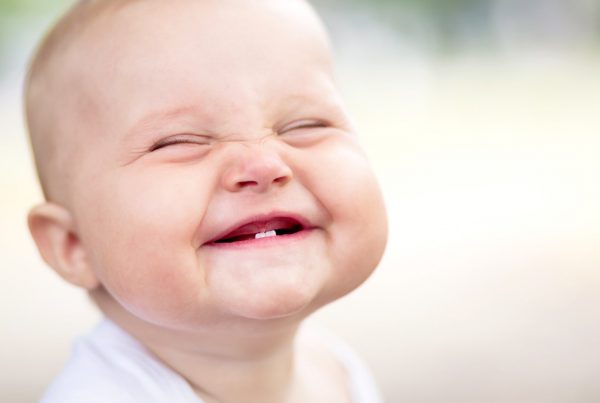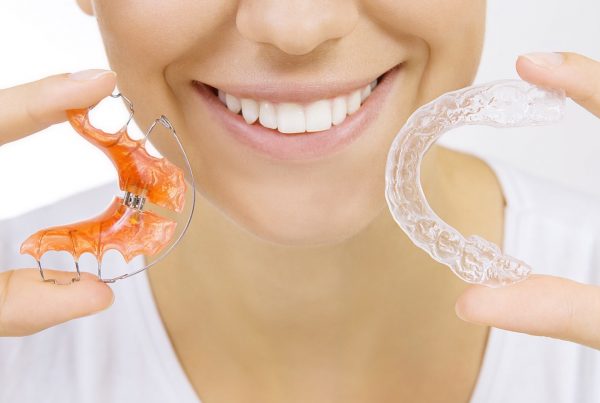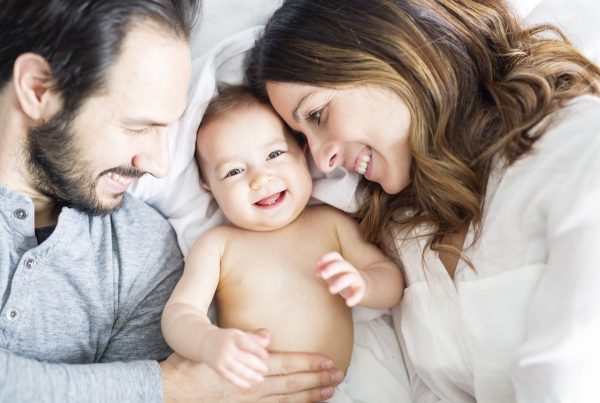For young children, you don’t need to worry about the extra stuff like mouthwashes and flossing unless specifically advised by your dentist. The important thing is that they get used to having their teeth brushed twice a day from as soon as the first tooth comes through.
A baby may not tolerate a tooth brush well initially so sometimes it can be easier to smear a tiny bit of toothpaste onto some muslin cloth over your finger and use that to clean their first teeth. But, ideally use a brush as soon as they will tolerate it.
Once they get a bit older, they can have a go at brushing themselves but I believe that it is really important that a parent or guardian should be finishing off the brushing to make sure it is done thoroughly until at least the age of 8 years old.
When picking a toothbrush, a small flat head with medium bristles is ideal. A smaller head is going to be easier to get right to the back teeth. Whenever they can tolerate it, it is fine for kids to be using an electric toothbrush.
Toothpaste
The key with toothpaste is fluoride. Fluoride is going to harden up these brand new teeth and protect them. The ideal amount of fluoride within the toothpaste will vary depending on the age of your child. This is a really important point. The toothpaste must be appropriate for the child’s age. If a child swallows too much fluoride while teeth are developing, it can cause the teeth to come through with white or brown marks. The levels of fluoride written here are what the Department of Health advise at the time of writing.
A child between the age of 0 and 3 years old should be using toothpaste with 1000 PPM (parts per million) fluoride. Only a smear should be applied to the toothbrush.
Children between the age of 3 and 6 years old can use a toothpaste with more fluoride in. The advise from the Department of Health is toothpaste with ‘more than 1,000 PPM fluoride’. They should be using a pea sized amount on their brush. They need to be supervised and encouraged to spit out the toothpaste after.
Younger children will generally find the taste of a normal adult toothpaste too strong but from the age of 7 years old, they should be encouraged to use a normal adult toothpaste with ideally 1450 PPM fluoride. There are age 6 plus toothpastes available with the right amount of fluoride but with a slightly gentler flavour. Similar to adults, children should avoid rinsing after brushing to leave some of the good stuff from the toothpaste on your teeth. Spitting out is sufficient.
Diet
The advice for children is just the same as the advice for adults. It is sugary and acidic foods that will do the damage. Sugars should be kept to a minimum and hopefully at mealtimes rather than being spread over the day. Sugar free medicines are ideal if available.
Something particularly relevant for younger children is to do with milk. Milk is quite sugary. Breast milk provides the best nutrition a baby can get and formulas are really helpful as well. However, what should be avoided is sending a baby to sleep with a bottle of milk or anything that isn’t water. One of the last things before a baby is put down should be to clean any teeth they have and then they should only have water after that. It’s the same principal as mentioned earlier; if you go to sleep with sugar on your teeth, the bugs can use that sugar all night and cause havoc. Going to bed with a bottle of milk is one of the main causes of decay in baby teeth.
Seeing the dentist
It is important that children get used to going to the dentist from an early age. As soon as they have teeth, it is important to get them checked.
The first few visits are just to get them used to the environment. I’m sat in a dental surgery now and, looking around, it’s a strange place. There’s a funny, disinfectant smell. There’s a chair that moves up and down. There are also unfamiliar people there that you haven’t met before and so it’s intimidating for most people, let alone young children.
For this reason, it’s really important that children become familiar with it from an early age and get used to the routine of going every 6 months. Your dentist won’t be doing much in those first appointments. But your child can have a look at the mirror, have a ride in the chair and pick up a smashing sticker for their trouble.
The earlier you take them, the sooner they will be used to it and the easier it will be for the dentist to monitor how things are developing.
Our advice is based on evidence collected and reviewed by Public Health England.
Keep updated with the Online Dentist newslettersign up today
Recent Articles
 Your child’s dental development (from 0 to 18 years old) As a general rule, we should all have 2 sets of teeth; 20 baby teeth (also called milk teeth) and...
Your child’s dental development (from 0 to 18 years old) As a general rule, we should all have 2 sets of teeth; 20 baby teeth (also called milk teeth) and...
 Once you, or your child, have had orthodontic treatment (or braces) to straighten your teeth and help correct your bite, your orthodontist will advise you to wear retainers. Retainers are...
Once you, or your child, have had orthodontic treatment (or braces) to straighten your teeth and help correct your bite, your orthodontist will advise you to wear retainers. Retainers are...





